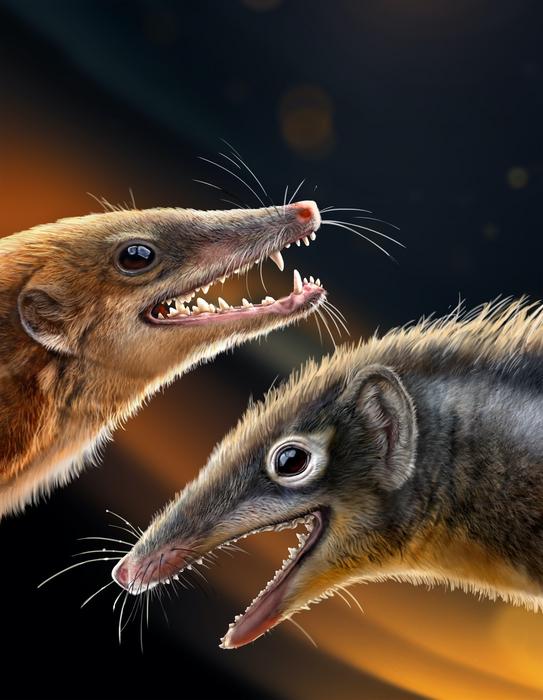While eyes are said to be mirrors of the soul, for paleontologists, teeth are sometimes the key to distinguishing some evolutionary features. Teeth represent the hardest tissues in a mammal’s body and are often the most commonly preserved fossil parts.
Recent studies examining teeth, jaws, and inner ear bones from evolutionary precursors to mammals called mammaliaforms are redrawing the group’s family tree.
Evolutionary Insights From Mammaliaform
Teeth are especially important in examining mammaliaform, because that group’s physiology sits at a juncture between reptile and mammal. Reptiles tend to sport mouths full of similar teeth, while mammalian teeth show more diversity.
“These dental characteristics provide valuable evolutionary insights, and in many cases, the taxonomy of a mammalian species can be largely confirmed by analyzing its teeth, particularly the molars,” says author Mao Fangyuan, a paleontologist with the Chinese Academy of Sciences.
Two Nature papers from a group of Chinese, Australian, and American scientists illustrate that two specimens of one mammaliaform, Shuotheriids is actually a new genus and species they named Feredocodon chowi.
“Before these two studies, Shuotheriids were often lumped together with “australosphenidans” solely based on similarities in teeth,” says Fangyuan says.
Read More: Established Science Is Wrong About Mammalian Evolution, Study Claims
Analyzing Mammalian Jaws and Middle Ear Bones
However, in the fossils they found, the scientists noticed some subtle but important differences in the shape of the teeth between the two types of creatures. Shuotheriids were Jurassic mammaliaforms and featured a basin-like structure in front of a triangle-shaped lower molar.
They were different than the more uniform teeth of earlier mammaliaforms. But they still didn’t match modern mammalian teeth, where upper and lower molars interlock, which helps chewing.
In the other paper, they showed how the jaw joint lost its load-bearing capacity as well as how bones in the middle ear differed from earlier species.
“This research strongly supports and enhances the view that the gradual evolution of the mammalian middle ear is a classic example of vertebrate evolution,” says Fangyuan.
The new evidence provides insight into how the ossified Meckel’s cartilage functioned as a stabilizing mechanism and reveals that the medial displacement of the quadrate relative to the articular bone played a critical role in the transformation from a load-bearing jaw joint to the middle ear structures.
This research supports the idea that the mammalian middle ear slowly evolved from the mammalian form.
Read More: Mammals Diversified Much More Rapidly 66 Million Years Ago
Article Sources
Our writers at Discovermagazine.com use peer-reviewed studies and high-quality sources for our articles, and our editors review them for accuracy and trustworthiness. Review the sources used below for this article:
Source : Discovermagazine








